
Match & Share · 2022
Ride-pooling reimagined – where savings meet safety, and you decide who you share your ride with
Business opportunity
As of summer 2022, airport traffic is recovering after Covid-19: U.S. passenger volume nearly hit pre-pandemic levels by April, while European airports saw a 247% year-on-year surge in Q1. Despite this, airport rides account for just 3% of Bolt’s GMV, compared to 10% of revenue and 13% of gross bookings for competitors. Up to 8% of trips also come from train stations and other transport hubs. Our goal is to enhance the airport ride UX and close the revenue gap.
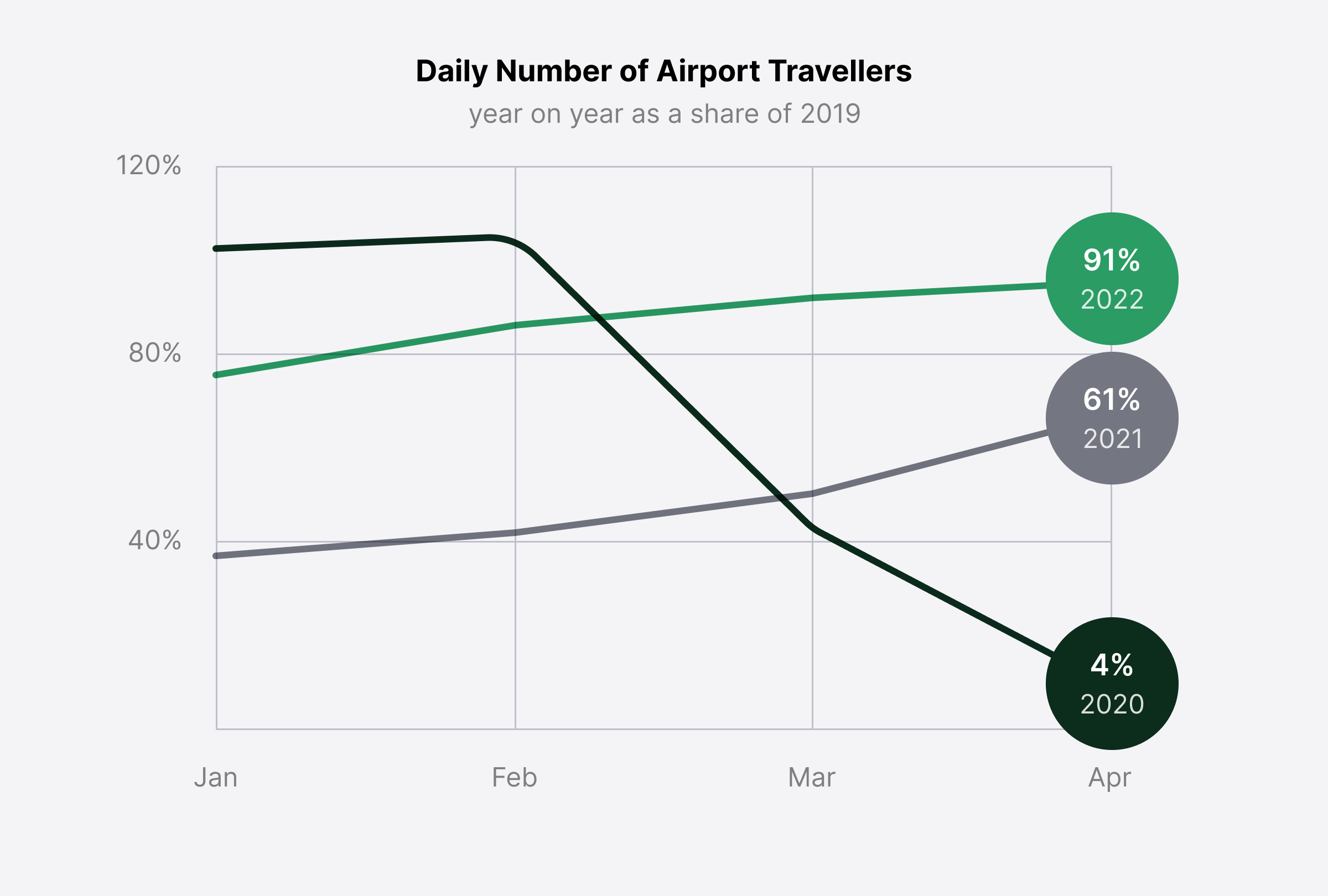
Average daily number of travelers passing through TSA checkpoints at U.S. airports as a share of 2019 traffic. Source: U.S. Transportation Security Administration
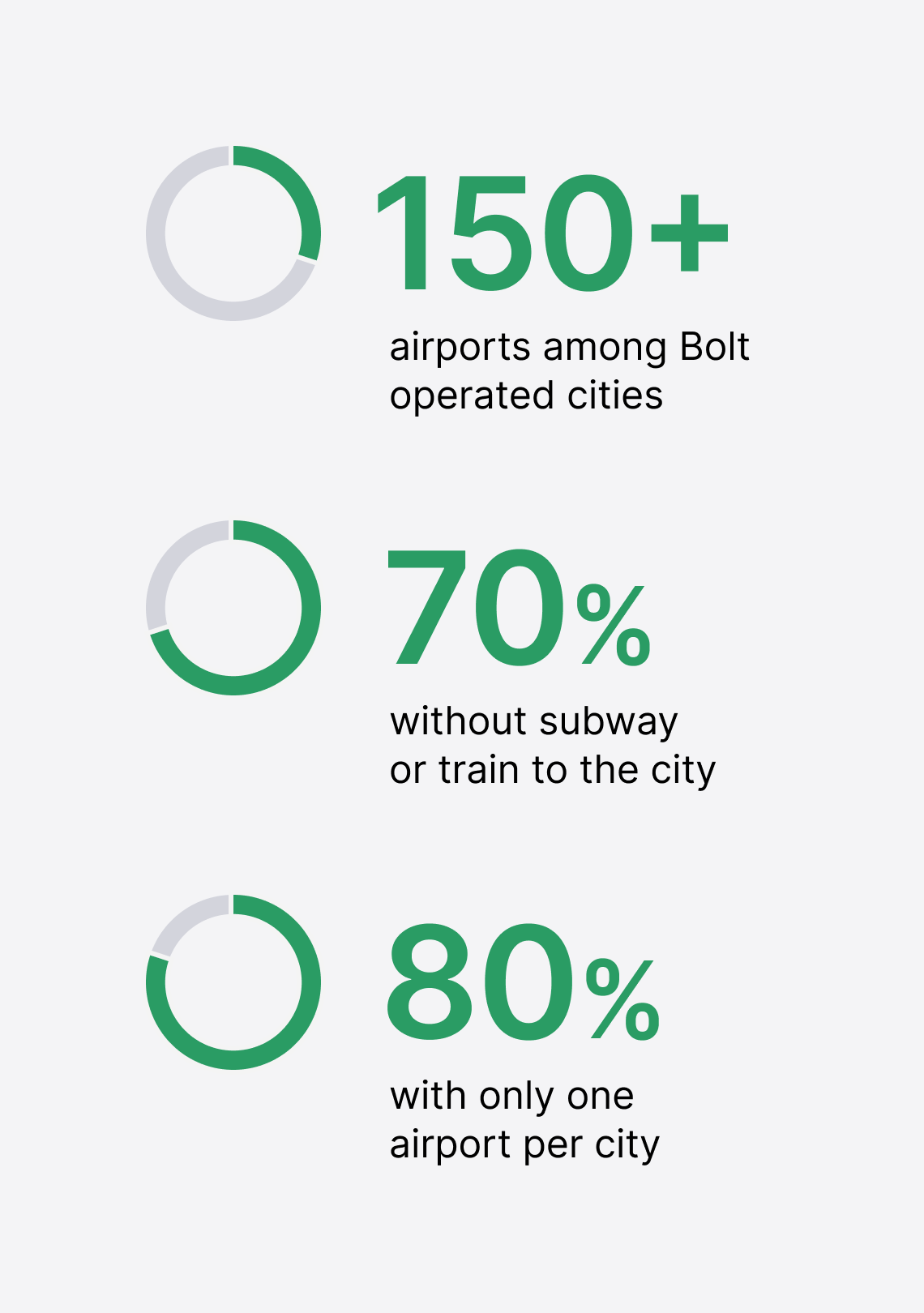
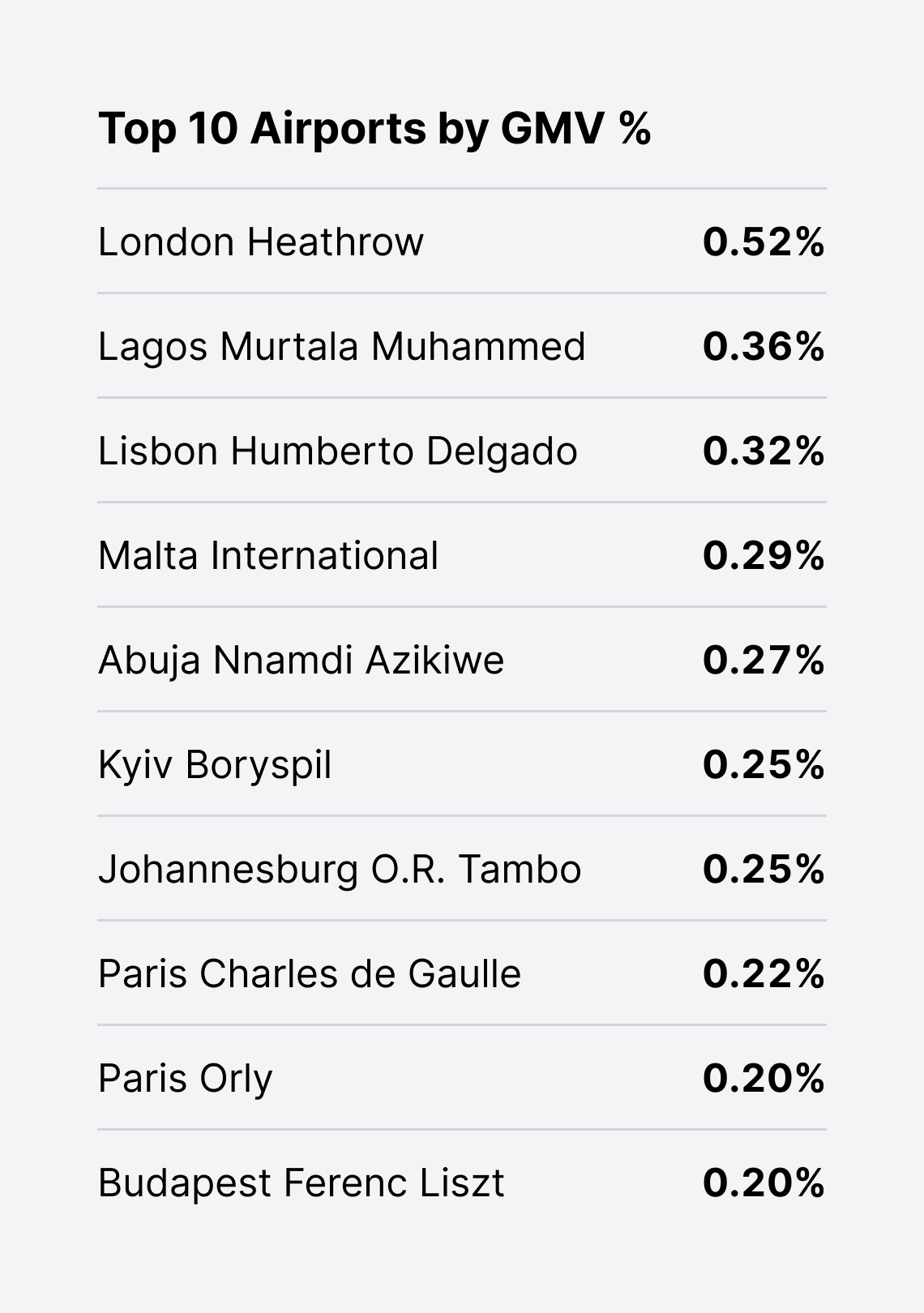
Usually, there are several ways to travel between the city and the airport. In order of average price, the most popular are:
- A friend’s car, if available
- A complimentary hotel shuttle, if available
- Public transport, such as a bus, minibus, subway, or train
- Ride-hailing services, such as Bolt, Uber, Lyft, Grab, and others:
- Ride-on-demand
- Ride-pooling (not supported by Bolt in 2022)
- Pre-booked rides (not supported by Bolt in 2022)
- Local taxi
- Car-sharing service
- Long-term car rental
- Luxury car with private chauffeur
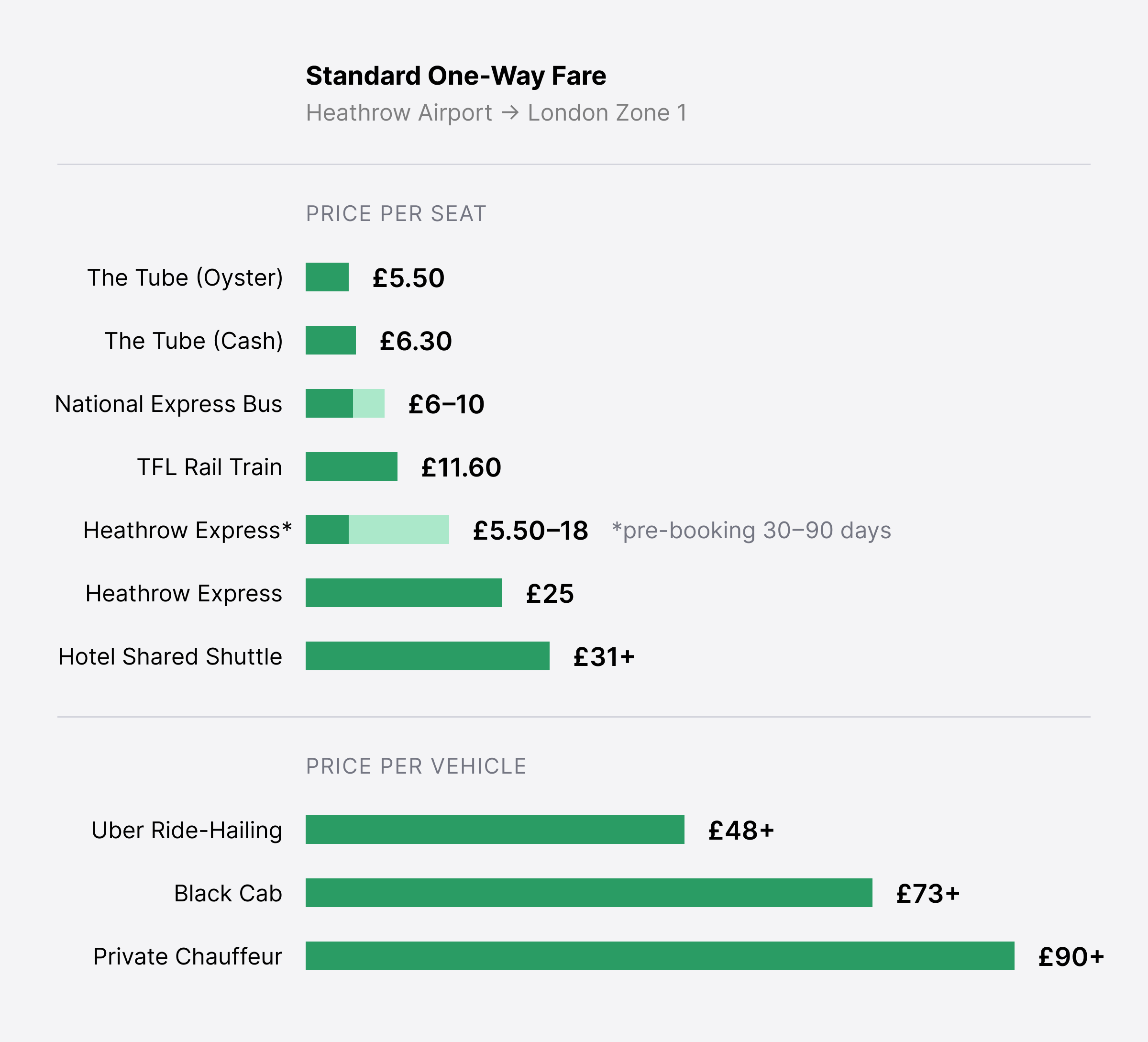
Comparison of public and private transport pricing from Heathrow to the centre of London, 2022.
Travelling by taxi or minicab was the most popular way to get to Heathrow. This figure gradually increased over two decades, reaching 32% by 2019.

Comparison of transport modes people used to get to Heathrow, 2002 vs 2019. Source: Statista
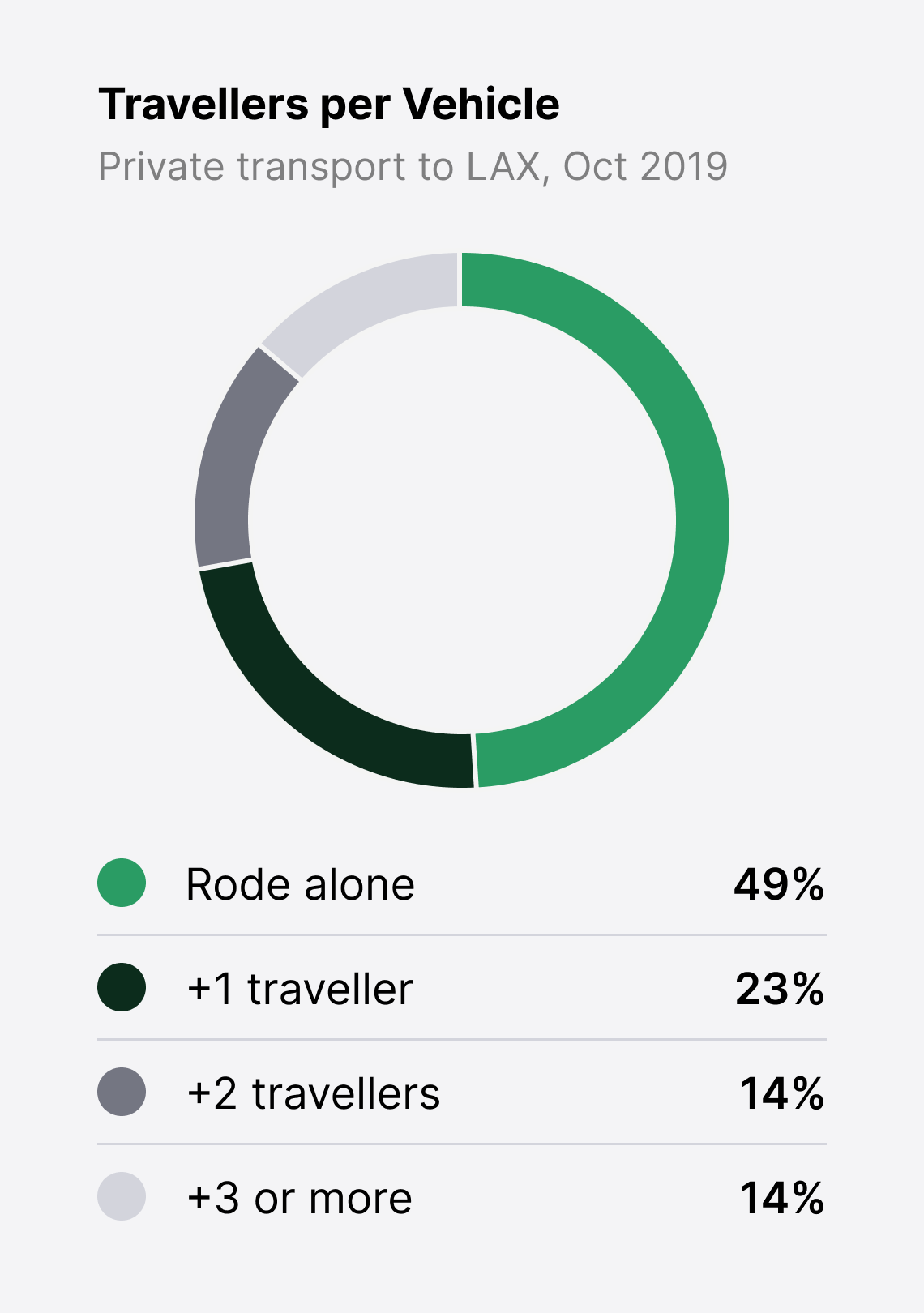
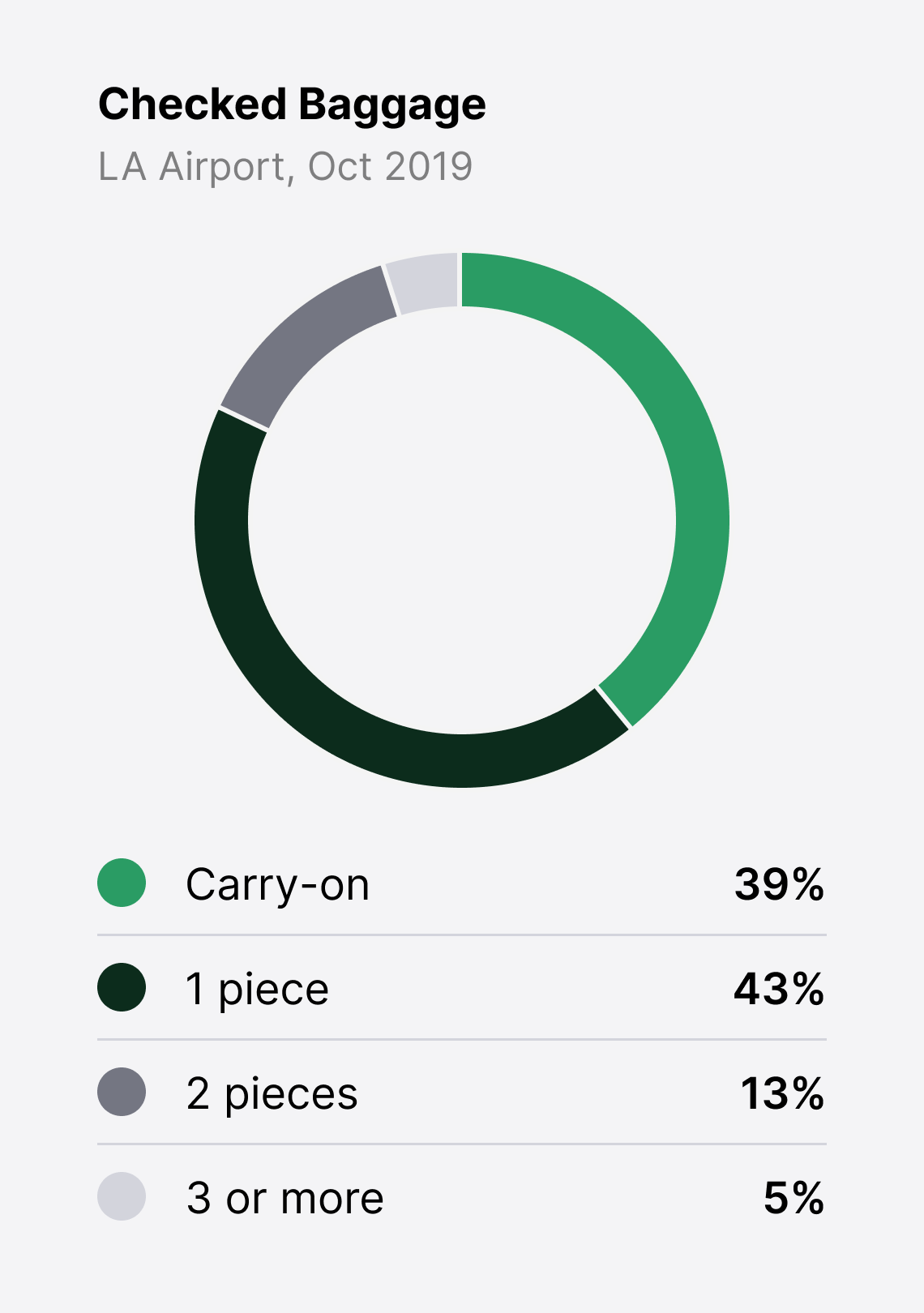
Design challenge
My goal was to design a seamless experience within the Bolt app to efficiently transport passengers to and from airports. In other words, to lower the average price without spoiling the user experience.
I explored two main options, each with pros and cons.
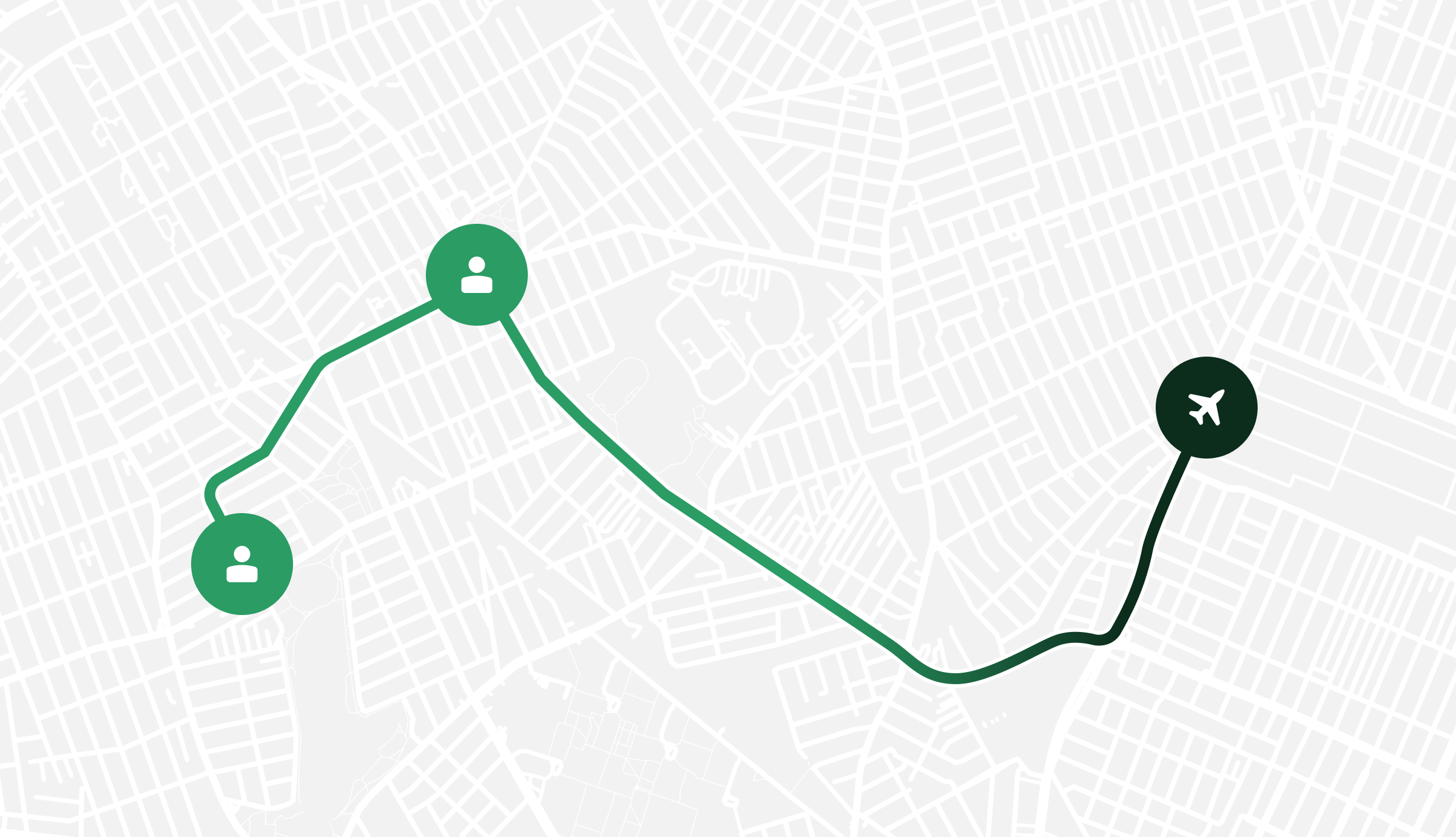
1. Ride-pooling mode:
2–3 riders share a large part of their route
- 👍 Up to 40% cheaper
- 👍 Flexible pick-up times and stops
- 👍 Easier to integrate into existing ride-hailing flow
- 👎 Hard to match riders in low-density areas
- 👎 Uncertainty about random co-riders
- 👎 Possible delays due to other riders
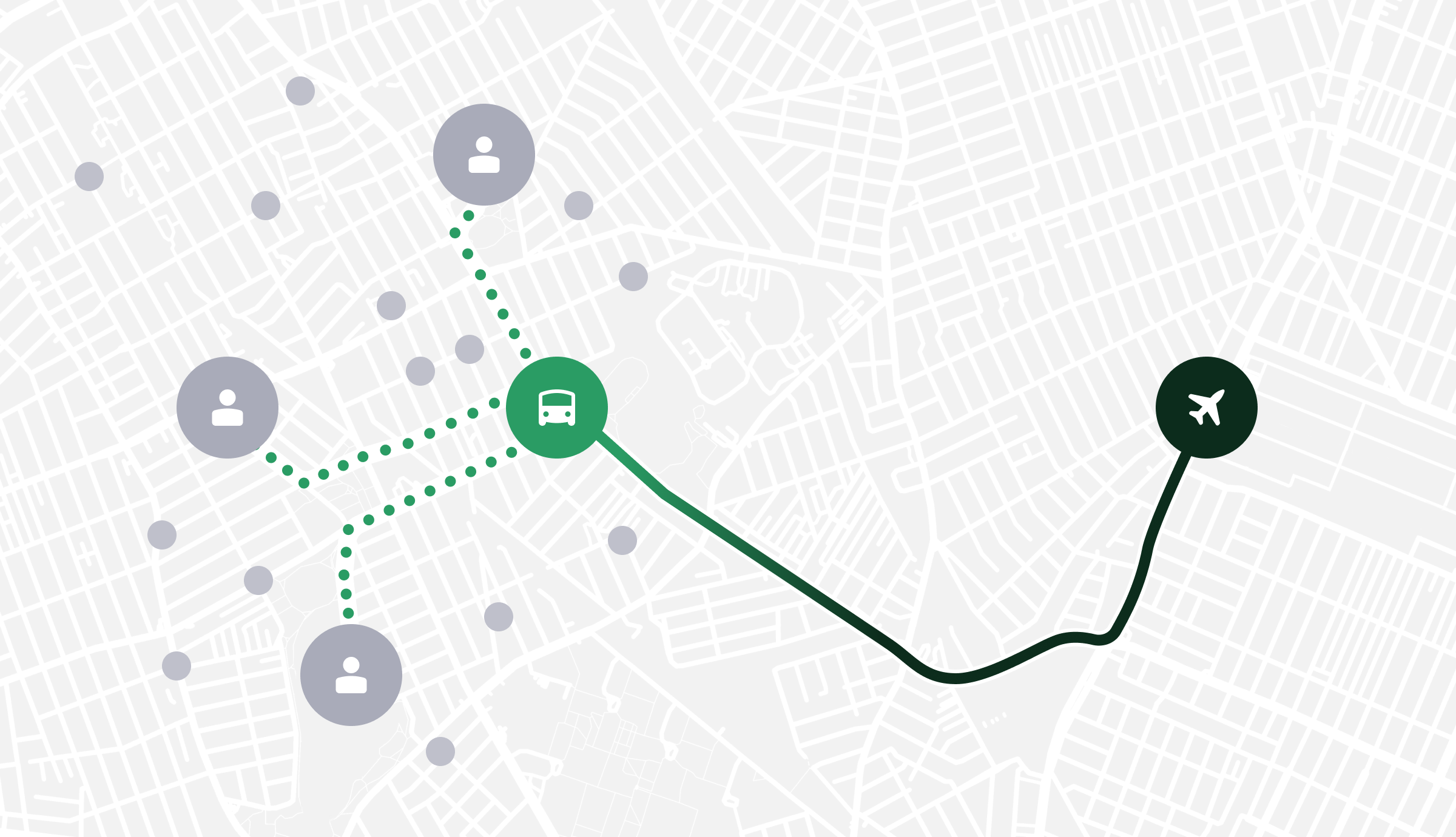
2. Airport bus shuttle:
10–50 passengers per bus
- 👍 Significantly cheaper
- 👍 Taxi rides to bus stops can be upsold
- 👎 Limited bus stop locations
- 👎 Luggage constraints
- 👎 Fixed schedules
- 👎 Hard to integrate with taxi flow
- 👎 May require external bus operator partnerships
Given my goal of keeping the solution within the Bolt app, I chose to proceed with ride-pooling. A shuttle service would require a separate user flow and is better suited as a standalone domain.
User research
I interviewed frequent flyers (4+ trips per year pre-pandemic) to understand how they choose airport transport. Their decisions depend on price, distance, purpose, time, traffic, weather, co-riders, luggage, and emotional/physical state. When considering a taxi, users compare price, ETA, and travel time (always against competitor apps). Findings are grouped by rider type:
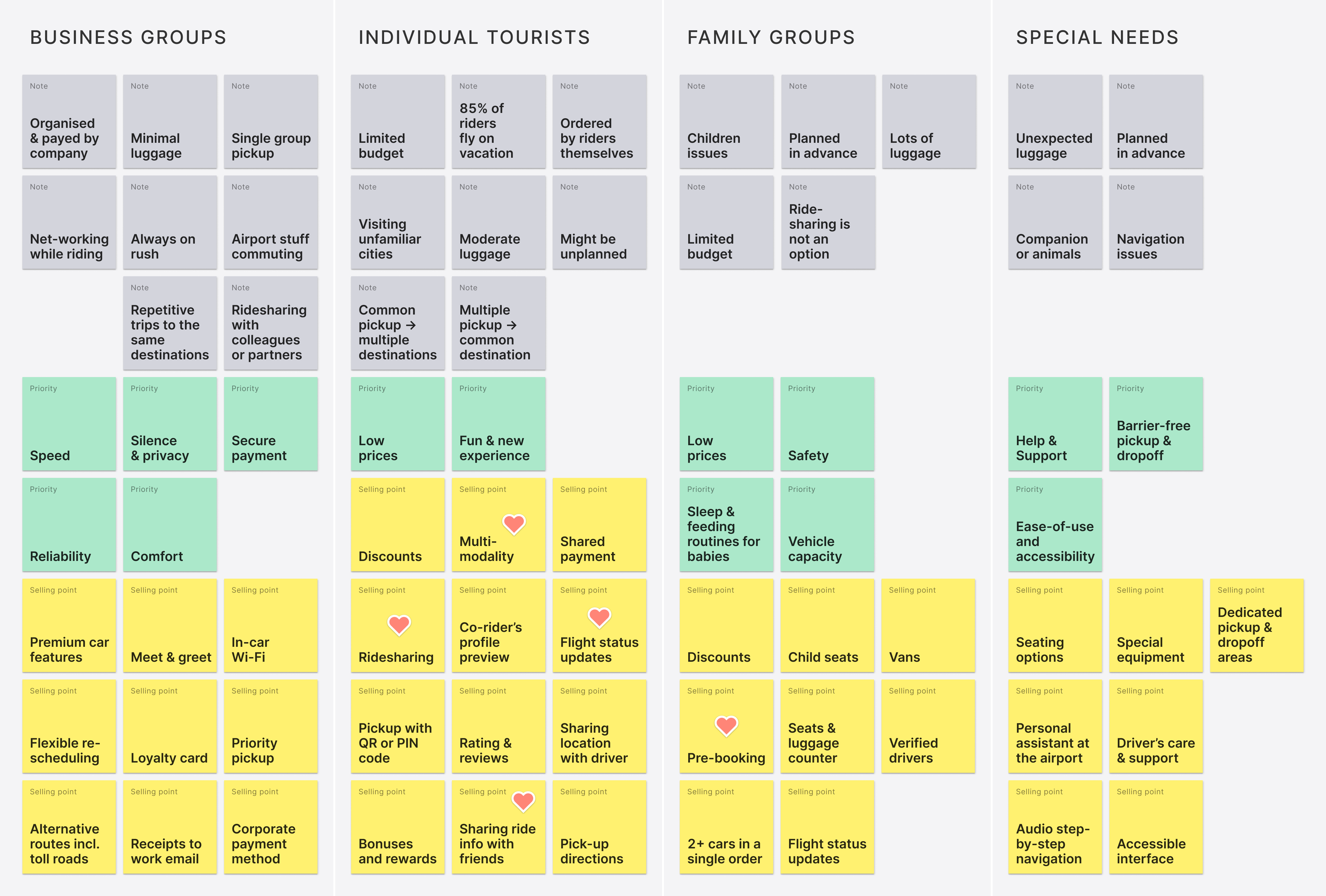
Interestingly, about half of travelers already share rides with friends, family, or colleagues. The big question is: what would encourage them to share with strangers? Here are the most common reasons, ranked by popularity:
- To split the bill
- For the fun of hunting for deals
- To avoid boredom when traveling alone
- For networking during shared business trips
- Out of curiosity or openness to meeting new people
- Some even use dating apps to find travel companions or drivers
...and what stops them from sharing rides?
- Discomfort with strangers, especially in confined spaces
- Taxis are perceived as private spaces, unlike public transport
- Fear of delays caused by co-riders
- Luggage space limitations
I focused on individual tourists—the largest segment and the most likely to benefit from ride-pooling.
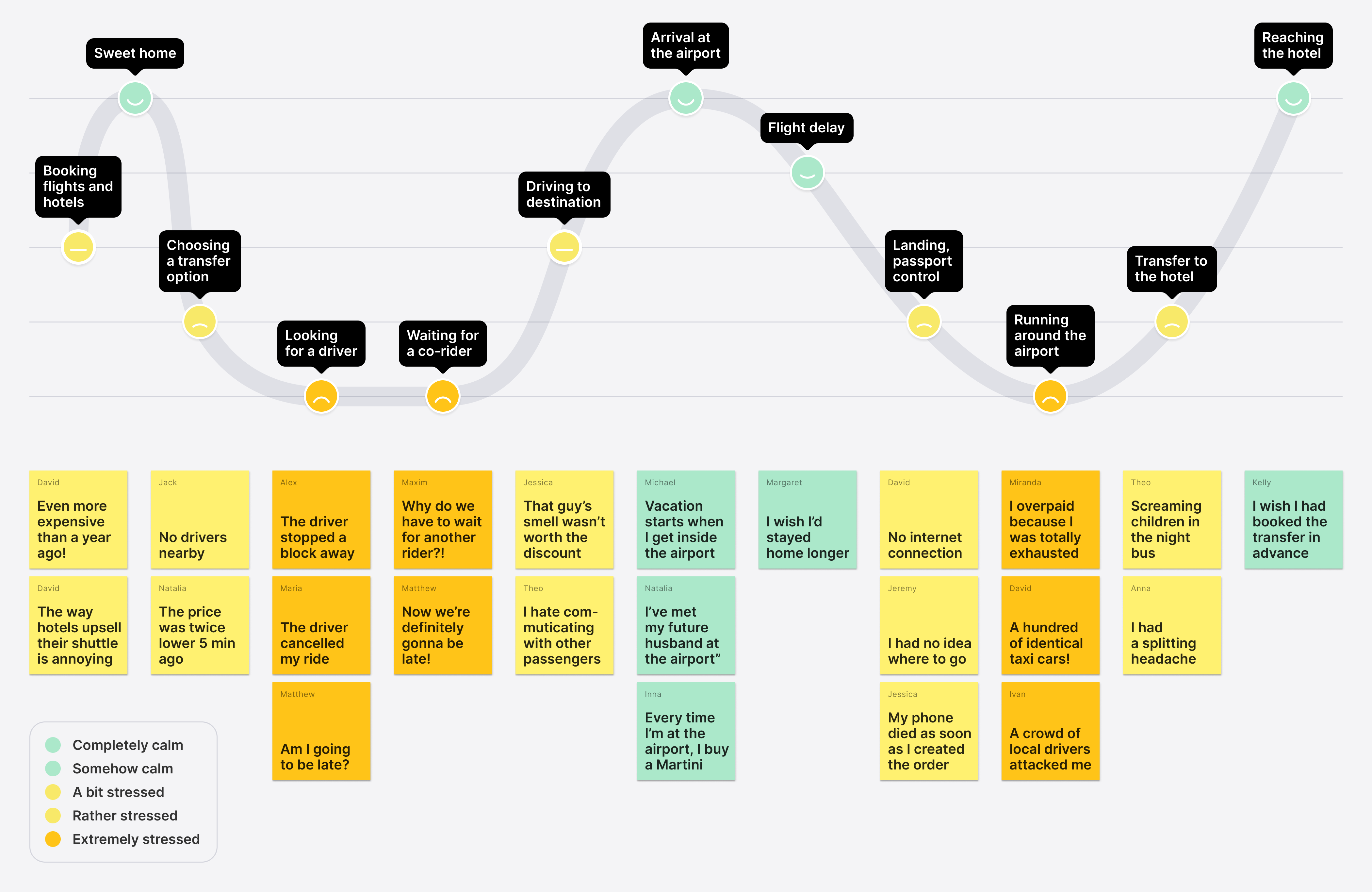
User journey
Airport rides often come with stress and uncertainty. Above is a journey map highlighting key pain points in context.
- High demand may raise prices and extend ETAs
- Traffic or delays may affect the arrival time
- Flights may be delayed or cancelled
- Familiar ride-hailing services might not work abroad
- Internet or technical issues may occur after landing
- Too many similar taxis make finding your car difficult
- Airports often restrict pick-up and drop-off zones
- Language barriers with drivers may complicate communication
User stories
Based on the research findings, I defined key user stories to guide how the proposed features will provide value to riders.
- As a rider, I want to choose who I share my ride with so I feel safe and comfortable.
- As a rider, I want to split the fare to save money
- As a rider, I want to arrive at the airport on time without rushing
- As a rider, I want to schedule a ride after landing so I can travel stress-free
- As a rider, I want to quickly find a verified driver to feel safe in unfamiliar places
Feature prioritisation
Next, our team estimated the effort required to implement missing features that could significantly enhance the user experience.
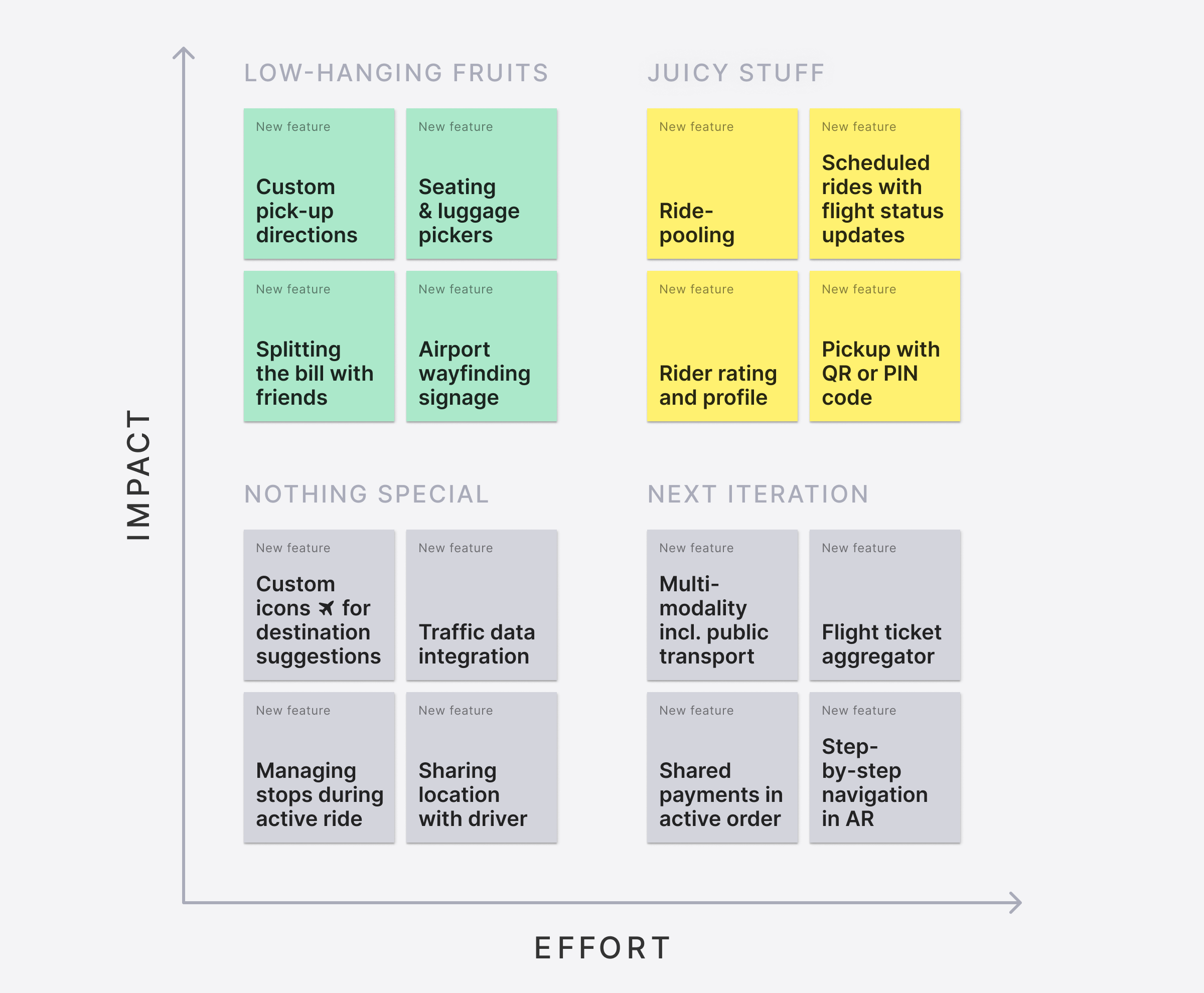
Impact/Effort matrix to assess the feasibility of ideas.
Solution
The proposed solution combines several features designed to improve the airport ride experience. Each was treated as a separate project to be implemented and tested incrementally:
- Flexible ride scheduling connected to flight status updates
- Ride-pooling with matched co-riders
- Custom pick-up directions
- Bill splitting with friends or fellow riders
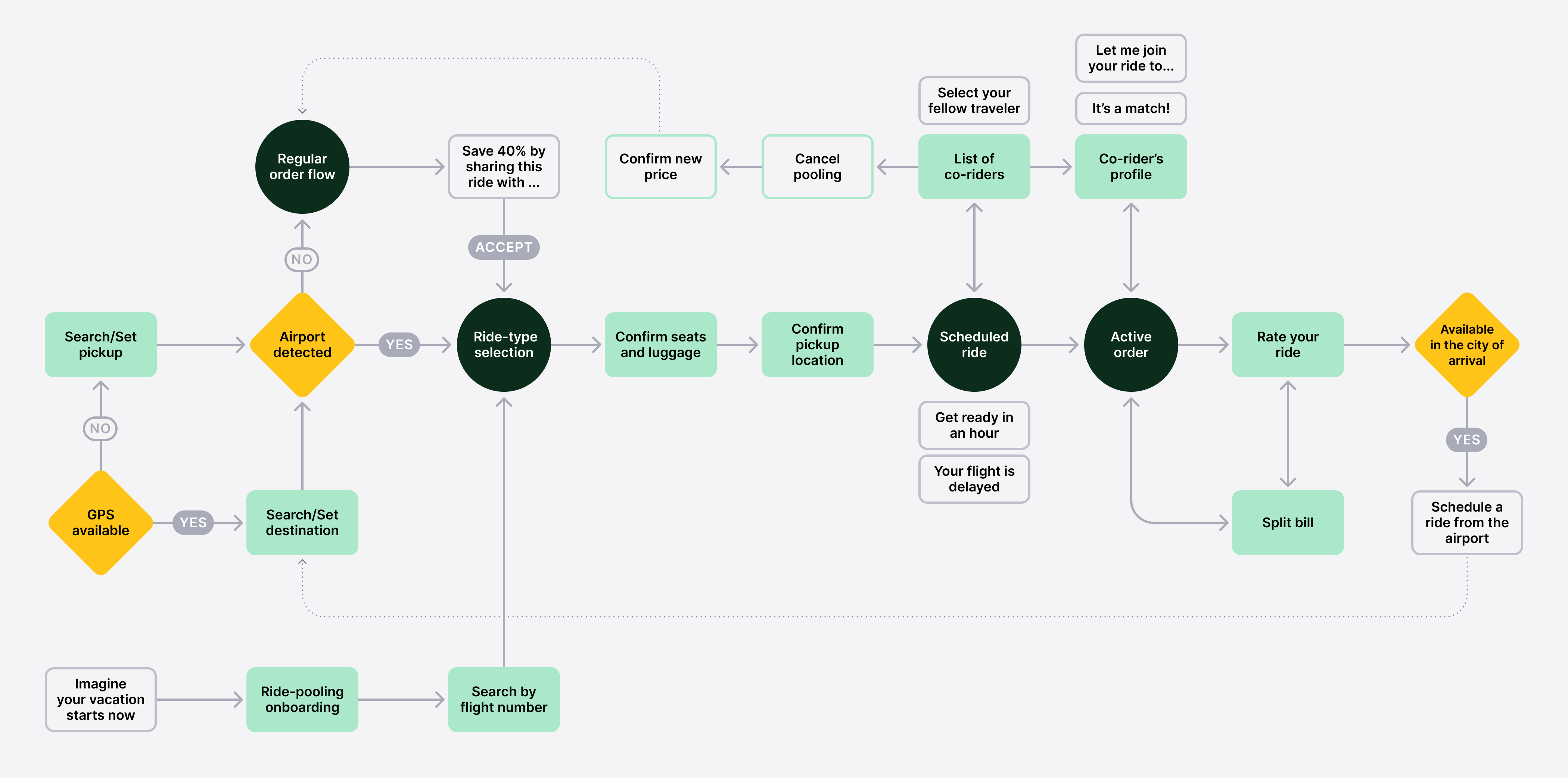
1. Ride scheduling
Unlike most competitors, Bolt doesn’t require users to input a pick-up time. Instead, we calculate it automatically based on traffic, distance, surge pricing, weather, and airport congestion. If a flight is delayed, we adjust the drop-off ETA to keep the plan accurate.
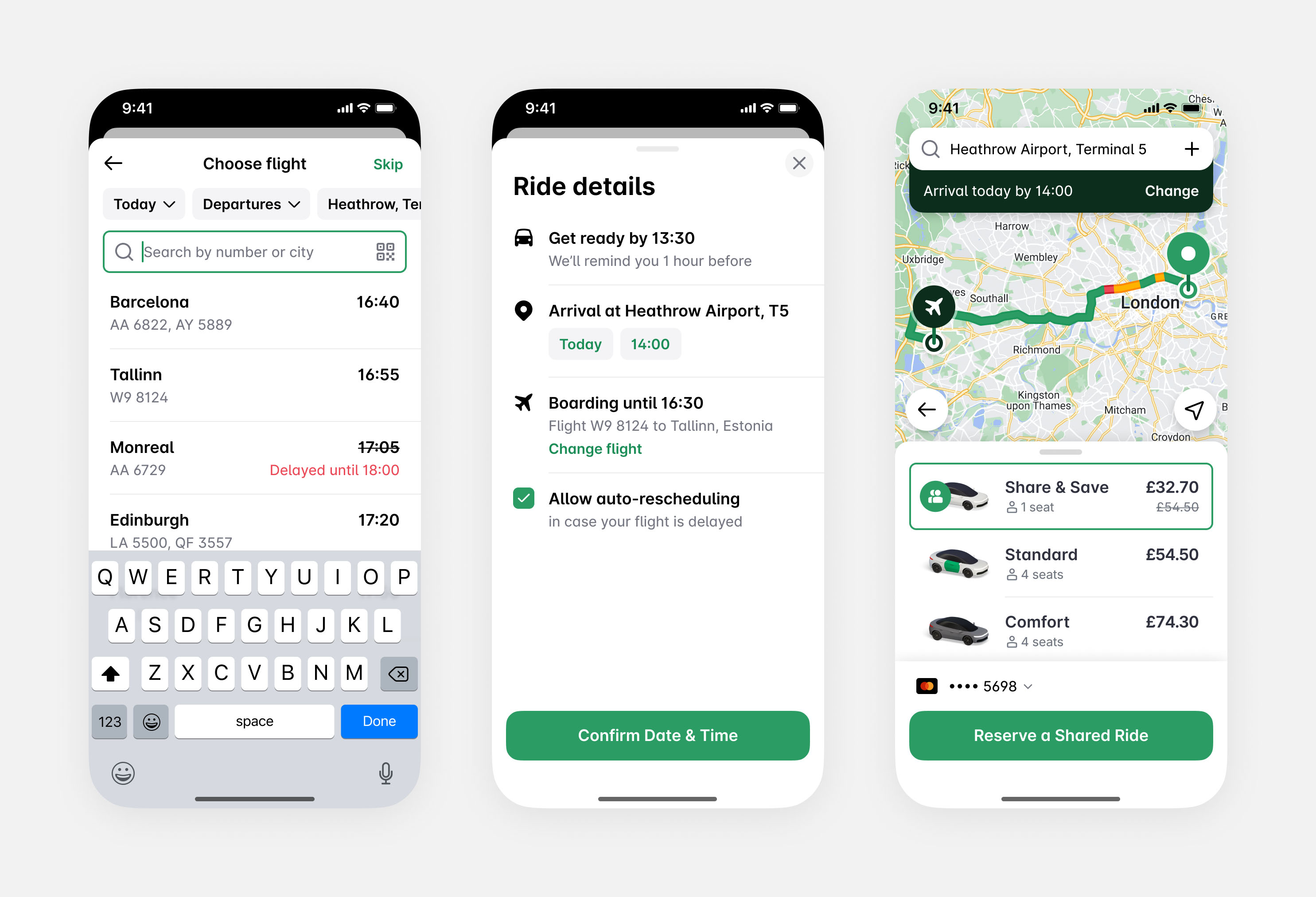
2. Ride-pooling
Typically, scheduled rides are more expensive to ensure that the driver accepts the order regardless of demand. To make it more affordable, we can match riders with similar routes.
Unlike competitors’ ride-pooling solutions, my proposal gives users more control: they can preview and choose their co-riders by sending or accepting invitations. If no suitable match is found, they can either wait for automatic pairing or opt out and pay the standard fare to ride alone.
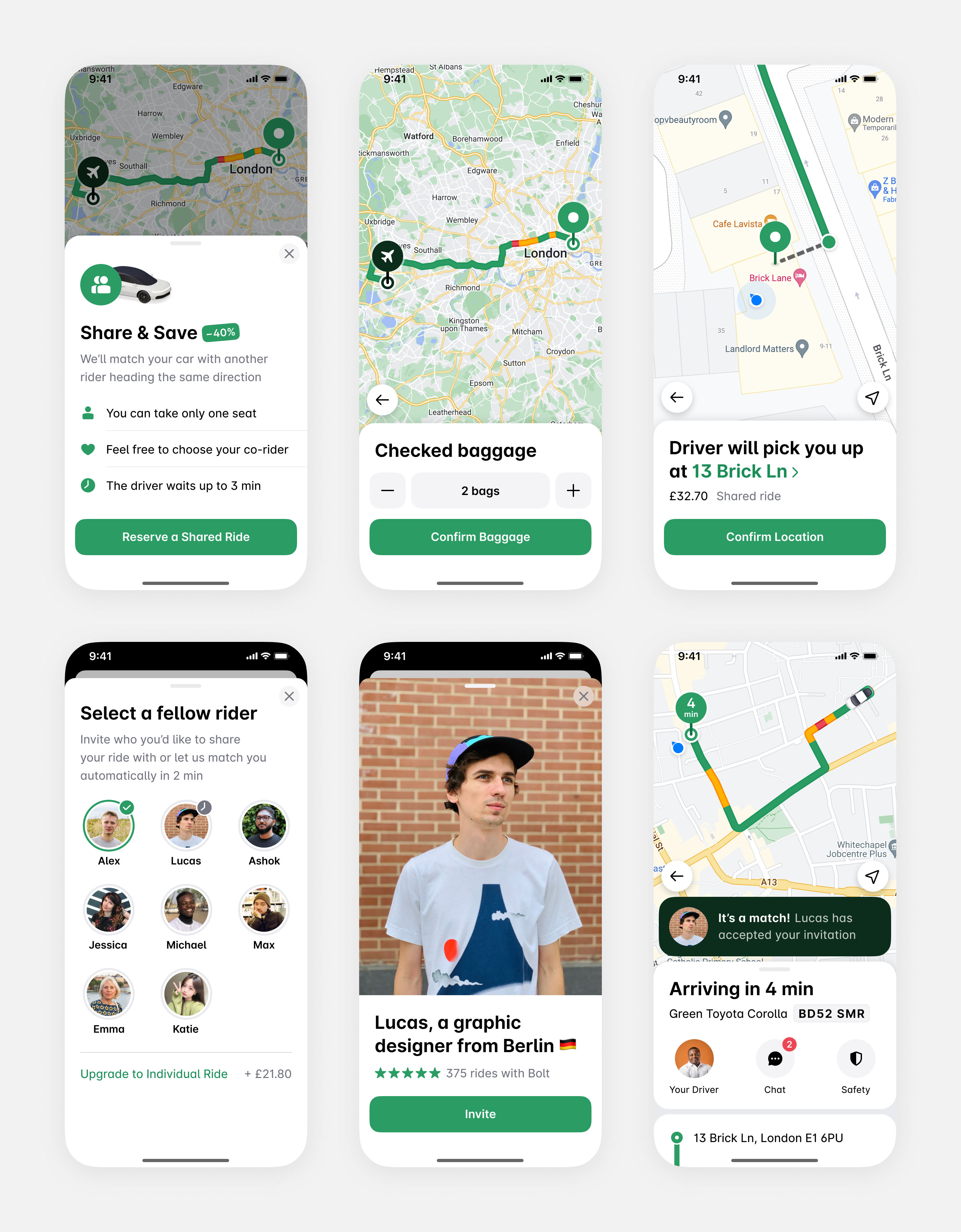

3. Pick-up directions
In the MVP, we added step-by-step directions from arrivals to the pick-up point.
Future iterations could include AR navigation for a more intuitive experience. To improve GPS accuracy inside airports, we’re going to supplement it with Bluetooth beacons or Wi-Fi triangulation.

4. Splitting the bill
When people ride with friends, they don’t need help finding co-travelers. But they do want an easy way to equally split the fare.
This feature also acts as a user acquisition tool by encouraging new riders to sign up.
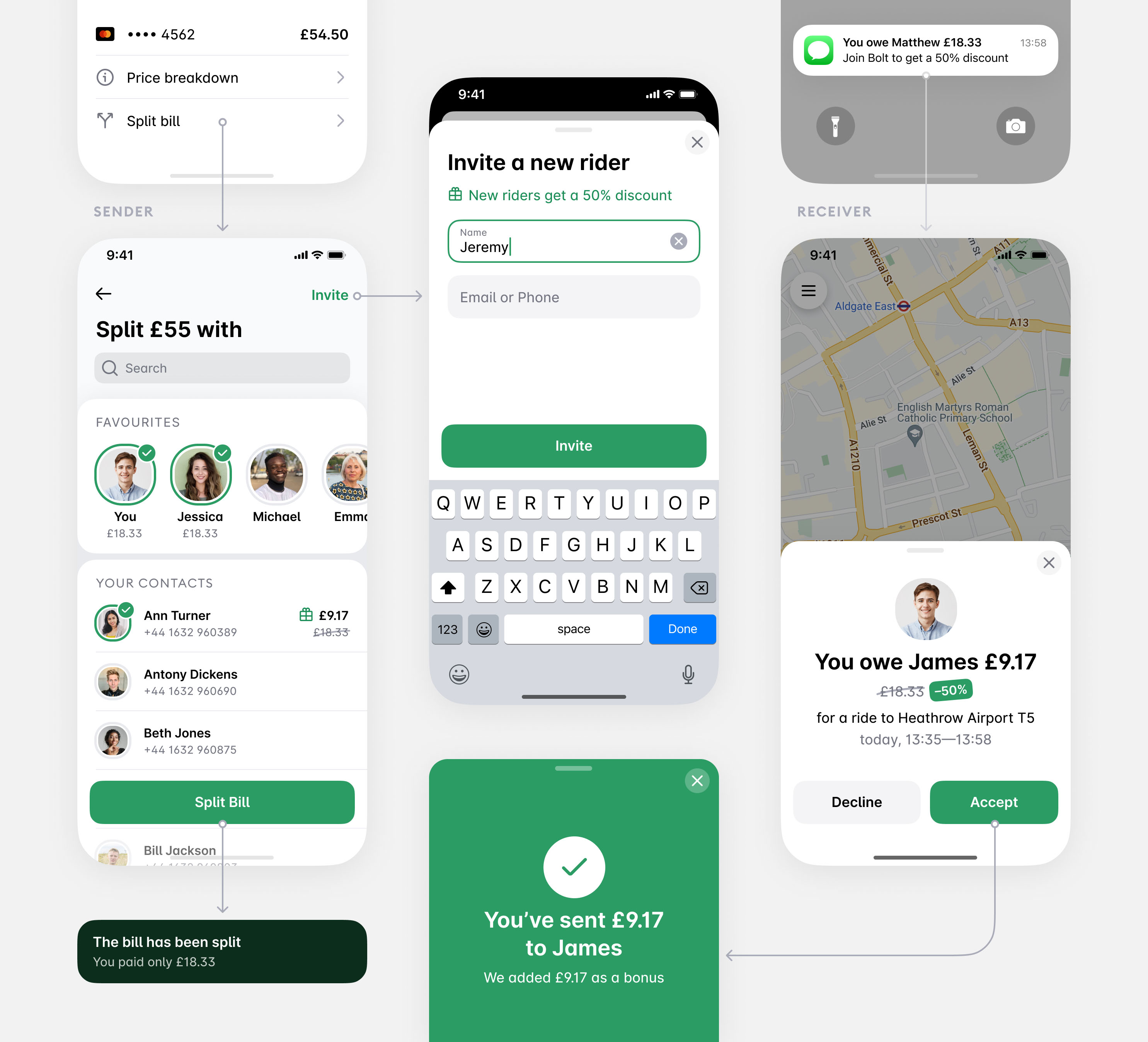
Business impact
After a year of testing the redesigned Bolt Rider app, airport GMV rose by 2.5 times. While not all features were implemented, early results are promising:
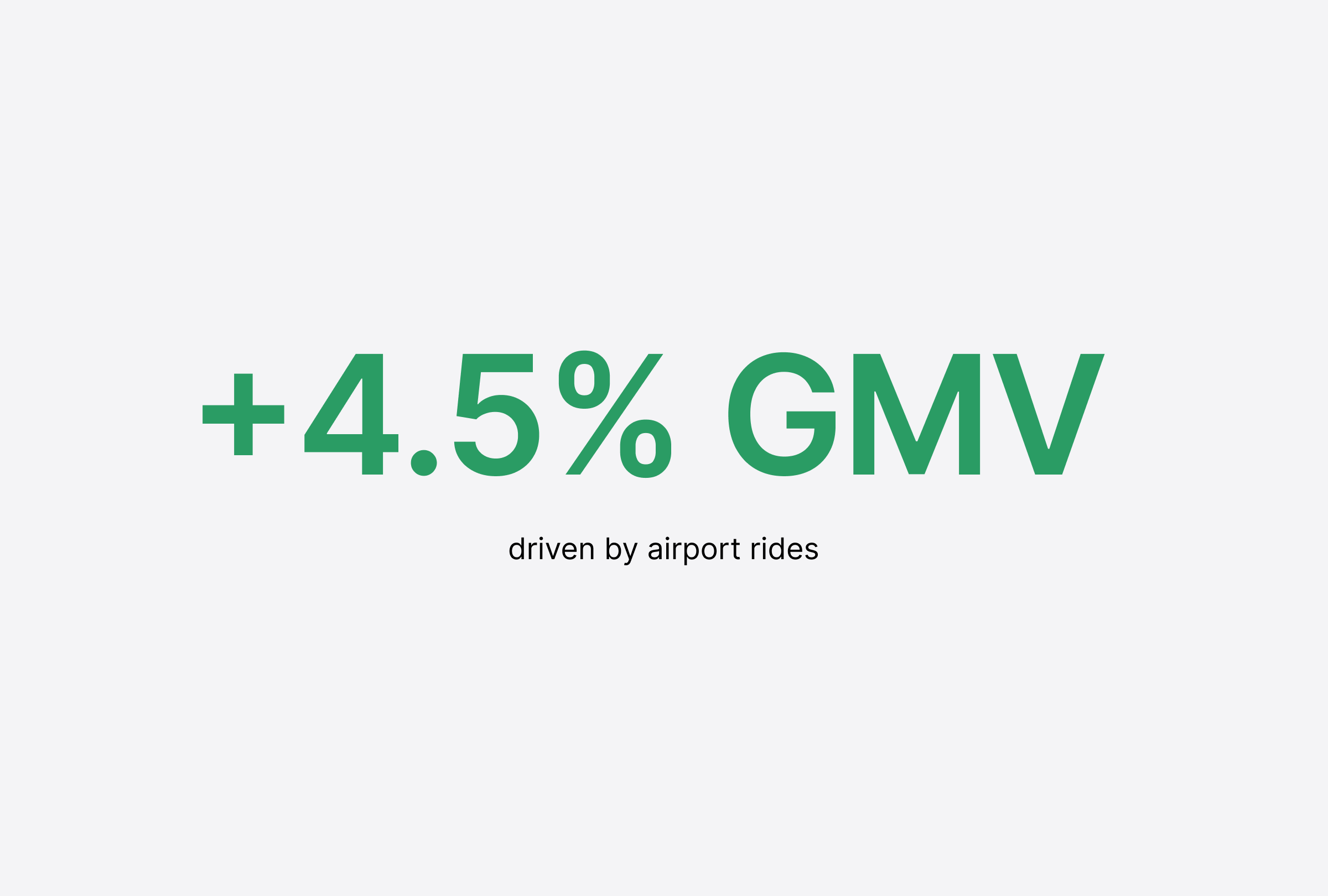
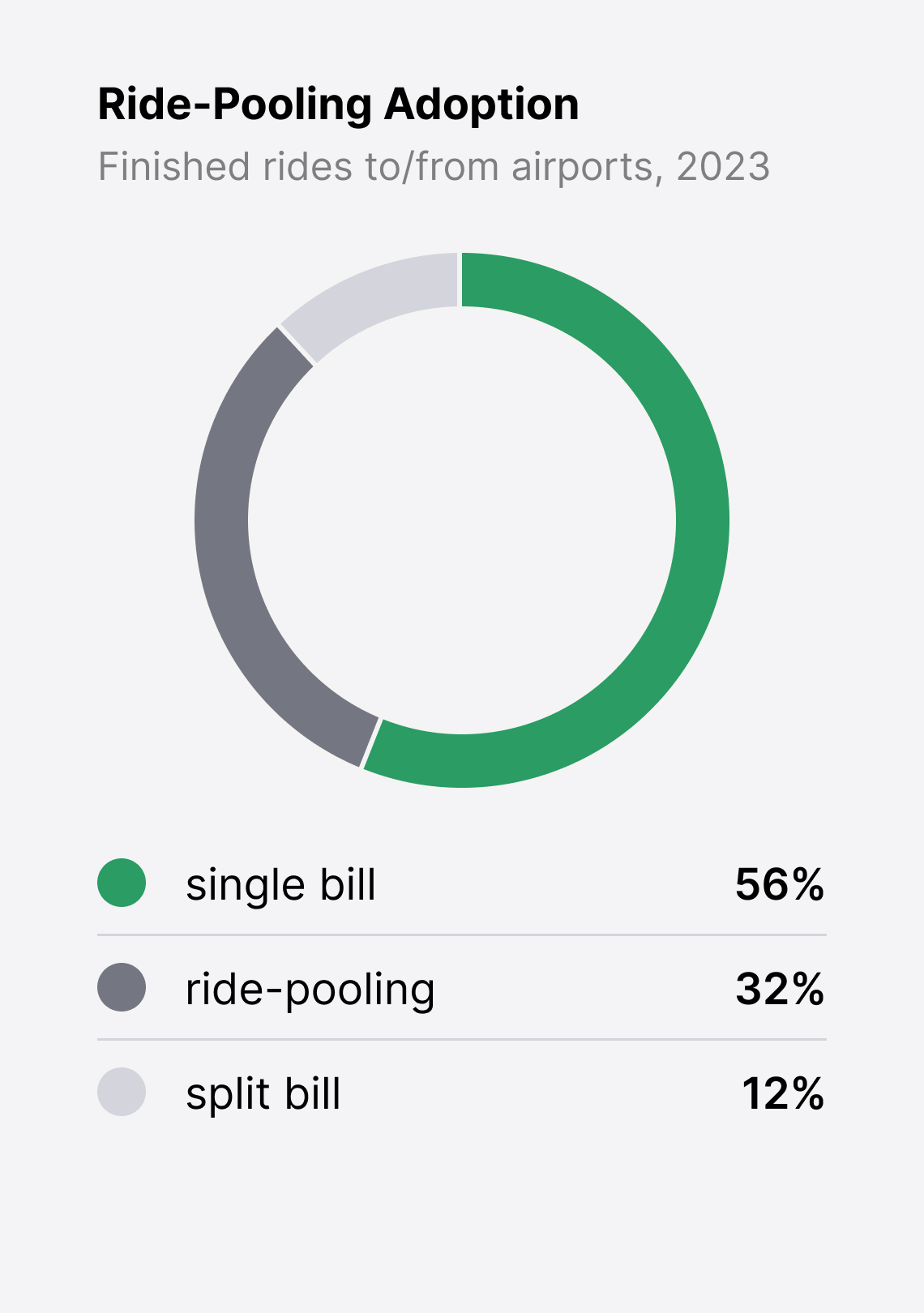
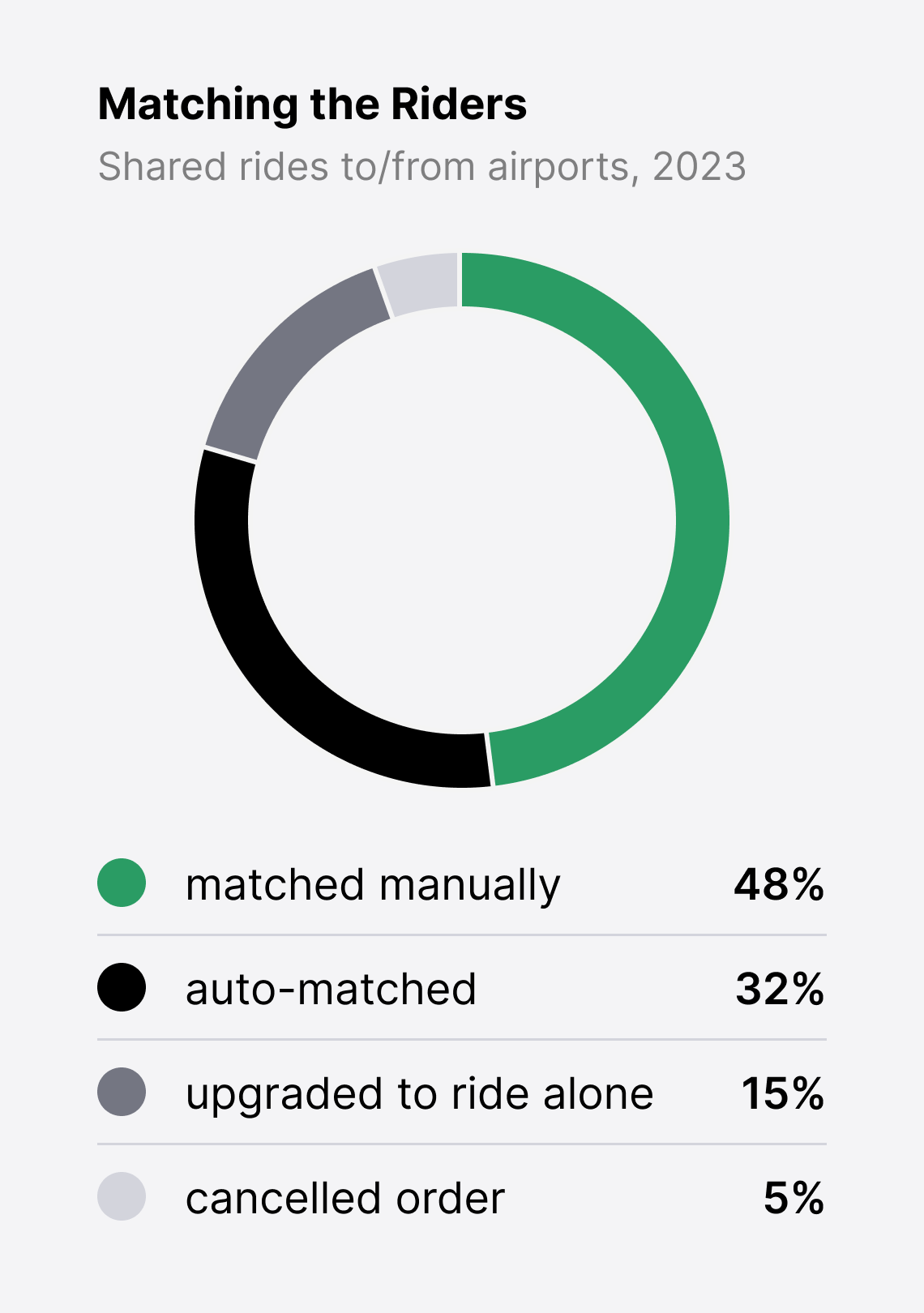
Ride-Pooling: 82% appreciated co-rider previews. Half matched manually; a third were matched by the system. Cancellations stayed low at 5%.
Ride Scheduling: Letting users choose arrival times (as alternative to pick-up times) increased completed scheduled rides by 3.5%. Flight number search wasn’t widely used though.
Pick-up Directions: Boosted completed rides from supported airports by 5%. Driver wait-time dropped 10%.
Bill Splitting: Attracted new users with half the churn rate of other acquisition channels.
For confidentiality reasons, I have omitted the actual values for metrics mentioned above.